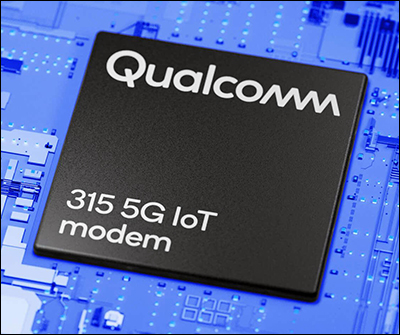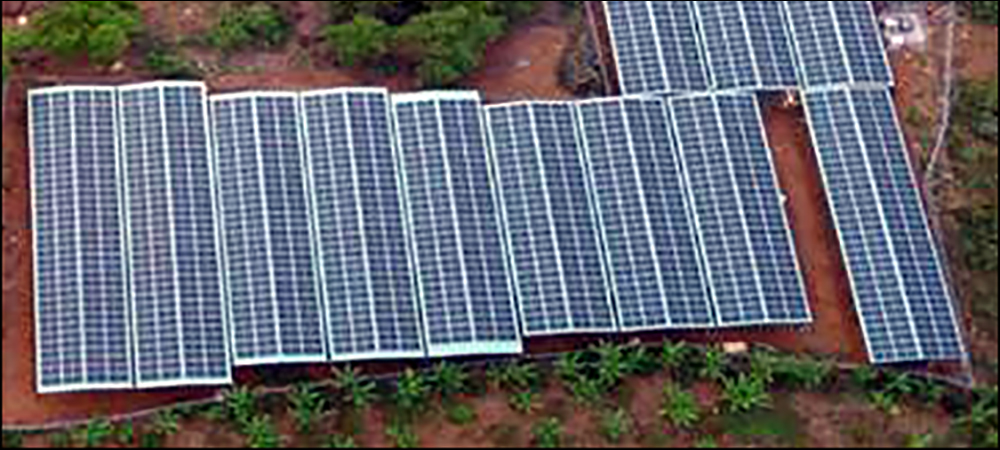Presented here are recent news announcements regarding the following organizations: R4i/Nebula, CAEN RFID, Qualcomm, STMicroelectronics, Cartesiam, Kerlink, Cloud Energy, Semtech, SAS, Wind River and Kinetic.
R4i/Nebula Integrates CAEN RFID Readers
Nebula, an R4i-owned company, has developed a fully integrated platform to track and trace tagged objects. Thanks to a long-term collaboration between R4i and CAEN RFID, the company has announced that all CAEN readers will now be fully supported by the Nebula platform, enabling what the firm describes as a “fast and straightforward implementation” of RFID-based track-and-trace solutions.
The Nebula platform, according to CAEN RFID, is designed to meet a customer’s unique radio frequency identification requirements. The system features a REST application programming interface, enabling users to integrate the RFID solution with their existing business applications.
The platform supports CAEN’s sensor loggers, so users can add information about the environment surrounding an object to the standard set of information, including identity and location. Using temperature loggers, for example, the solution can monitor shipments of perishable products, such as vaccines or fresh food, CAEN reports.
Qualcomm Intros 5G Modem for Industrial IoT
Qualcomm Technologies has announced an Internet of Things (IoT) modem solution equipped with 5G connectivity and built for Industrial IoT applications. The company’s 315 5G IoT Modem-RF System is designed to support the IoT ecosystem in building upgradeable LTE and 5G devices for IoT verticals, the company reports, as well as accelerate the adoption of 5G connectivity for IoT and expand the overall opportunity for 5G in the IoT industry.
 As Qualcomm explains, 5G was conceived as a broad connectivity fabric and is proving useful for emerging applications such as the IoT. The 315 5G IoT modem is designed for industrial and enterprise applications, with gigabit performance, low power and thermal-efficient capabilities, the firm reports. The device is intended to meet the needs of such industry segments as retail, energy, automation, manufacturing, precision agricultural, construction, mining and public venues.
As Qualcomm explains, 5G was conceived as a broad connectivity fabric and is proving useful for emerging applications such as the IoT. The 315 5G IoT modem is designed for industrial and enterprise applications, with gigabit performance, low power and thermal-efficient capabilities, the firm reports. The device is intended to meet the needs of such industry segments as retail, energy, automation, manufacturing, precision agricultural, construction, mining and public venues.
The new device is the latest entry in Qualcomm’s portfolio of LTE IoT modems. With a reduced footprint and an integrated RF front-end, it is designed to provide a pin-to-pin-compatible solution for LTE legacy modules so they can be upgraded with no changes required for existing hardware. The modem is expected to be made commercially available during the second half of this year.
“Qualcomm Technologies is continuously optimizing and developing industry-leading technologies and modems, ranging from the most power efficient NB-IoT solutions to new products like the Qualcomm 315 5G IoT modem, purpose-built to bring 5G connectivity capabilities to IoT,” said Jeffery Torrance, Qualcomm’s senior VP of product management, in a prepared statement. “We are pleased to unveil our new 5G IoT solution, which will help stimulate and scale the 5G IoT industry and enable the transitions needed for Industry 4.0. This solution will help create long-lasting devices and promote growth and expansion in the 5G IoT industry, allowing seamless integration for customers utilizing previous generations of connectivity.”
STMicroelectronics Acquires Edge AI Software Company Cartesiam
STMicroelectronics, a semiconductor company focused on electronics applications, has announced a transaction with Cartesiam to acquire its assets, including its IP portfolio, and to transfer and integrate its employees. Based in France, Cartesiam is a software firm that provides artificial intelligence (AI) development tools enabling machine-learning (ML) and inferencing on Arm-based microcontrollers. Closing is subject to regulatory approvals and the transaction’s terms have not been disclosed.
The NanoEdge AI Studio solution allows embedded systems designers without prior knowledge of AI to develop specialized libraries integrating ML algorithms. Devices leveraging Cartesiam’s technology are already in production around the world, including inside connected devices, household appliances and industrial machines. NanoEdge AI Studio will provide ST’s customers with additional flexibility to integrate machine-learning into their solution, the company reports.
“Using artificial intelligence to create ever smarter solutions is one of the priorities of our customers, regardless of their size or industry,” said Claude Dardanne, the president of ST’s Microcontrollers and Digital ICs Group, in a prepared statement. “With STM32Cube.AI, STMicroelectronics already offers the ability to map and run pre-trained artificial neural networks on our broad portfolio of STM32 microcontrollers. The addition of Cartesiam’s machine-learning technology to ST’s existing solutions will provide the best edge-AI solution portfolio on the market for any customer looking to bring additional innovation to their offering.”
Kerlink, Cloud Energy Develop IoT LoRaWan Smart-Farming Initiative in Vietnam
Kerlink, a provider of IoT solutions, and Cloud Energy, a Vietnamese IoT startup, are developing and deploying new solutions to meet the demand for IoT services in rural areas around Ho Chi Minh City. Expanding on an earlier collaboration for smart-building and energy-management projects in that city, the two companies recently deployed a wireless LoRaWAN network to monitor and manage a 900 kWp solar-power installation on a mushroom farm. The system was chosen for its stability of data reading, its ability to connect to different inverter brands, and the cost savings on investment and maintenance, the companies report.
 The IoT upgrade included Kerlink’s long-range, low-power Wirnet iStation gateways and its Wanesy Management Center to operate and manage the new system, as well as Cloud Energy’s LoRaWAN-based meter and devices for data management, designed to meet the requirements of utility scaling. The system is expected to reduce the owners’ operation and maintenance costs by 30 percent annually, compared to the previously used system, while new installations are expected to shave 30 percent off the cost of a new wired monitoring system.
The IoT upgrade included Kerlink’s long-range, low-power Wirnet iStation gateways and its Wanesy Management Center to operate and manage the new system, as well as Cloud Energy’s LoRaWAN-based meter and devices for data management, designed to meet the requirements of utility scaling. The system is expected to reduce the owners’ operation and maintenance costs by 30 percent annually, compared to the previously used system, while new installations are expected to shave 30 percent off the cost of a new wired monitoring system.
“Integrating LoRaWAN technology and solutions brought by Kerlink was a natural choice, as we previously gained significant expertise working with them in our energy-metering projects in Vietnamese cities,” said Tuan Anh Pham, Cloud Energy’s founder, in a prepared statement. “Expanding our focus to potential IoT applications in remote areas allowed us to take advantage of Kerlink’s Wanesy Management Center platform bundled with its secured LoRa network server. That ensures that our client’s system and data are monitored 24-7.”
“Smart farming is one of the Internet of Things’ most important vertical markets in Southeast Asia, but it needs the breakthrough innovations that companies like Cloud Energy bring to new fields to reach its potential,” added Rene Arbefeuille, Kerlink’s VP for the Asia Pacific region, in the prepared statement. “Cloud Energy’s success in exceeding objectives set by end users will pave the way for system integrators and financial institutions to invest in the expansion of smart-farming projects using private network infrastructure. Together, Kerlink and Cloud Energy are helping producers maximize specific and tailored farming production yields, demonstrating again how LoRaWAN IoT networks are enabling new opportunities in the agriculture sector.”
Semtech, SAS Partner on Cloud IoT Solutions
Semtech, a supplier of analog and mixed-signal semiconductors and algorithms, and SAS, which offers analytics and AI, are working together to deliver edge-to-cloud Internet of Things-based solutions. The solutions, which incorporate LoRaWAN connectivity with SAS’s IoT analytics platform, are intended to simplify the development of IoT solutions focused on solving challenges involving natural disasters, hunger and sustainability, the companies report.
“SAS and Semtech offer proven technologies and innovative industry solutions that address complex challenges in communities,” said Alistair Fulton, the VP and general manager of Semtech’s Wireless and Sensing Products Group, in a prepared statement. “Combining SAS IoT analytics solutions—i.e., data, streaming analytics and AI—with the LoRaWAN standard strengthens our collaborative vision of providing innovation to create a smarter, safer world.”
“IoT is forcing a fundamental shift of business and operational strategies as organizations adopt new models for agile IT, edge analytics and platform-based security,” added Jason Mann, SAS’s VP of IoT, in the prepared statement. “SAS IoT and Semtech are building an ecosystem of partners to drive the right digital infrastructure strategy to harness IoT data and enable the right set of applications that deliver meaningful results.” SAS’s IoT solutions, built on Microsoft Azure, provide real-time insights into IoT data and analytics generated across multiple use cases, including flood prevention, livestock wellness, precision agriculture and energy forecasting.
“As the driving force behind LoRa technology, Semtech plays a vital role in the development and deployment of LPWANs for IoT devices,” said Steve Hoffenberg, VDC Research‘s director of IoT and embedded technology, in the prepared statement. “This new collaboration will bring more existing SAS customers to the IoT, and bring the advantages of data analytics to current and prospective IoT users, enabling enterprises and organizations to solve problems and improve efficiencies in a wide range of use cases, from industrial automation and asset tracking, to agriculture and environmental management, and many more.”
Wind River Adds Security Features to Its IoT Platform
Software provider Wind River has announced security enhancements to Wind River Studio, its cloud-native platform for the development, deployment, operations and servicing of mission-critical intelligent systems. According to the company, the software enables users to meet cybersecurity and anti-tamper requirements, and to thus secure devices and systems through development, deployment and operations.
As new devices become connected, the company explains, each represents a point of entry that can be exploited by a cyberattack. Last year, IoT devices were responsible for around 33 percent of infections observed in wireless networks, more than twice the number from 2019. Industries with higher dependency on software and intelligence-based systems, Wind River reports, will need to demand that security be addressed at every step in an intelligent system’s lifecycle.
“In an intelligent systems world where devices are expected to connect and compute together in near-real time, cybersecurity is a design necessity and no longer a ‘nice to have.’ This is even more true for mission-critical systems, such as those in the energy, aerospace and defense, and industrial sectors,” said Cyra Richardson, Wind River’s chief product officer, in a prepared statement. “Recent research with executive leaders in these sectors have shown us that companies on a successful path with their intelligent systems were twice as likely to have built-in deep cyber protections for their systems than any other group.”
“Security must be taken seriously,” Richardson added. “The only way to do that is to be proactive. With billions of new devices constantly connecting locations around the world, the attack surface is staggering. It will be important for solution builders, both hardware and software, to be thoughtful stewards and strong advocates for cybersecurity in order to deliver trustworthy compute infrastructure.” The latest version of Wind River Titanium Linux, developed by Star Lab, offers a Linux system-hardening and security capability and is available on the market for operationally deployed Linux systems.
Features include secure boot, anti-tamper protections and the ability to simplify mandatory access-control policy creation. Titanium Linux’s security controls map to such IoT security guidelines as NIST IoT cybersecurity-related initiatives; OWASP IoT security projects; IoT Security Foundation protocols; and guidance from the European Union Agency for Cybersecurity, ETSI, GSMA and more. Designed using a threat model presuming an attacker will gain root access to a system, Wind River says, Titanium Linux is built to maintain the integrity and confidentiality of critical applications, data and configurations, while assuring operations.
Perr&Knight Issues Report on Kinetic Wearables for Workers
Kinetic, which provides wearable technologies designed to foster safe environments for the industrial workforce, has announced the findings of a report from actuarial consulting firm Perr&Knight, which finds that Kinetic’s Reflex wearable technology reduces injury frequency by 50 to 60 percent and lost workdays by 72 percent. The report provides an analysis of the wearable device and its impact on workers’ compensation insurance losses; read more here.
The Reflex wearable detects unsafe postures commonly occurring on the job, such as bending, overreaching and twisting, which can lead to injury. Kinetic tested the device in various industries and gathered data before and after the wearable’s implementation. Perr&Knight then analyzed this data to determine whether resulting metrics support an improvement on workers’ compensation experience. Findings include a 50 to 60 percent reduction in injury frequency, while manufacturing industry frequency of strain and sprain claims declined by 49.5 percent. Warehouse workers decreased the frequency of strain and sprain claims by 58.8 percent, and also reported was a 72 percent reduction of lost workdays.
“To get a clear view of the Kinetic wearable device and its impact on workers’ compensation insurance losses, we partnered with an actuarial consulting firm that had proven domain expertise in the property and casualty and accident and health industries,” said Haytham Elhawary, Kinetic’s CEO and cofounder, in a prepared statement. “Perr&Knight was able to take operational data from Kinetic customers and draw a clear line between the deployment of our Reflex wearable technology and reduced injuries and lost workdays.”
Perr&Knight’s analysis used Kinetic data from clients of the wearable technology, including counts of OSHA recordable incidents, sprains and strains, and days of missed work. The data covered more than 15 million hours worked across various industries and more than 2.1 million hours of Kinetic wearable hours. The data was aggregated at the month level to review metrics over time, the company reports, and the analysis was supplemented with industry data where appropriate.


